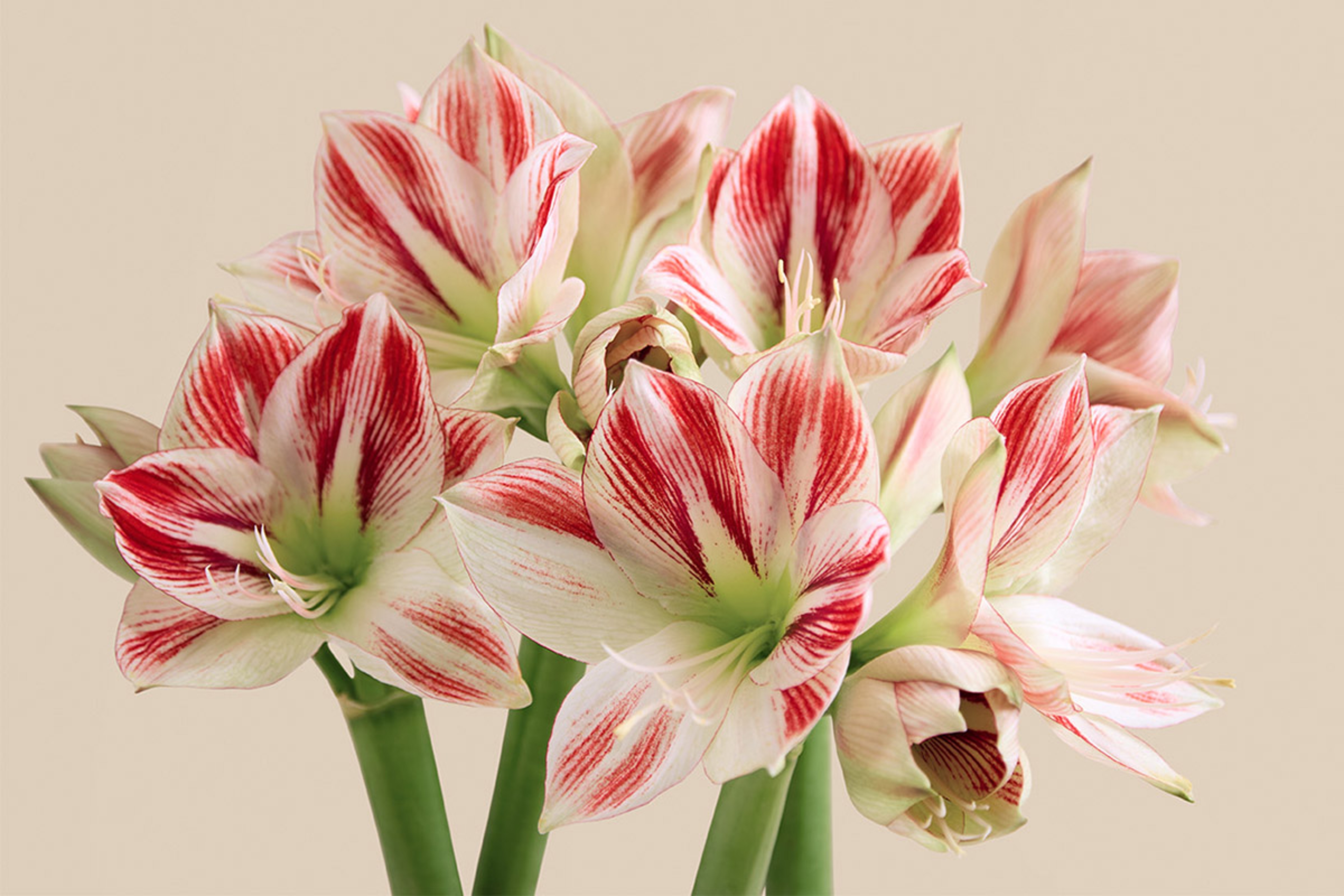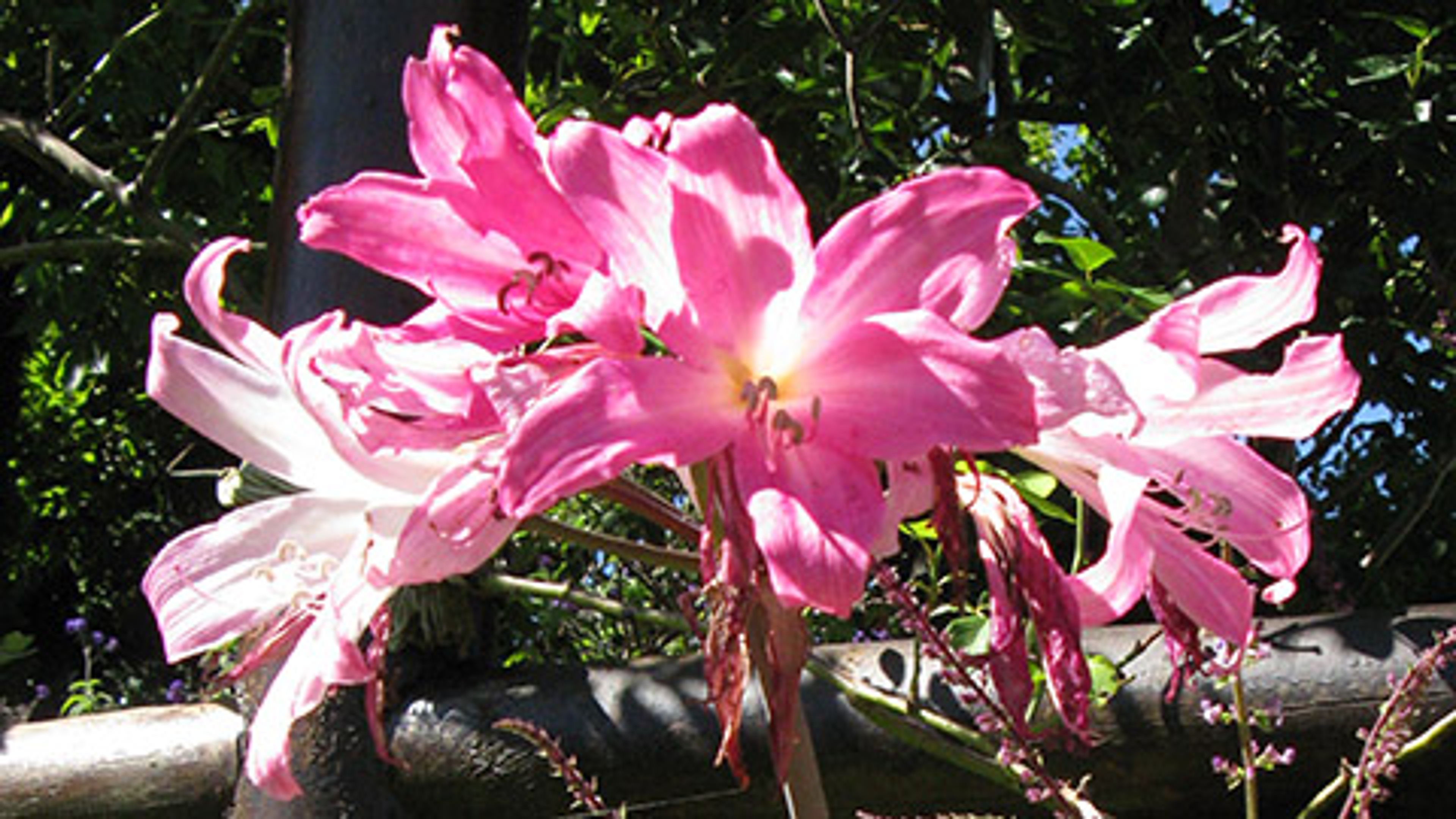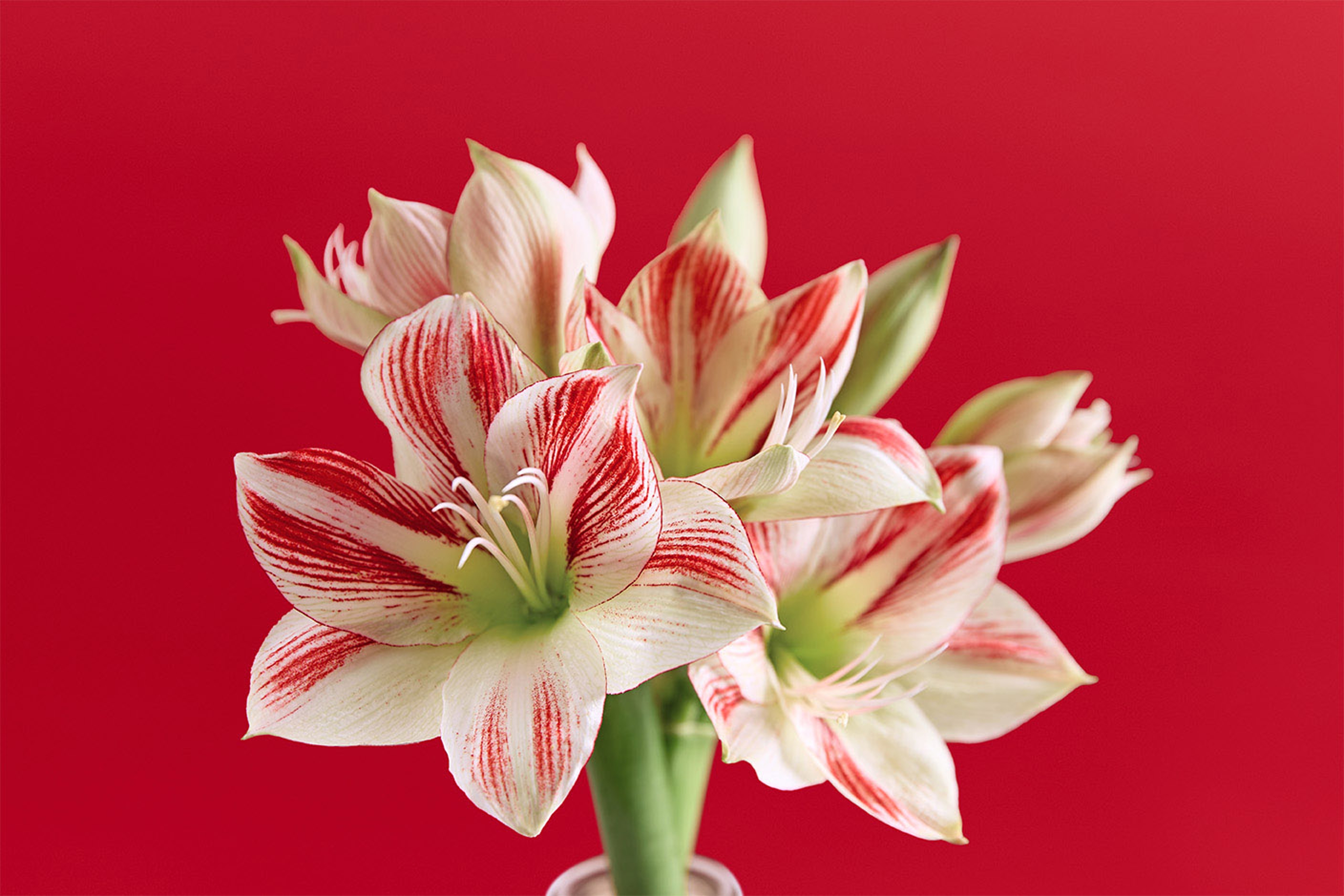All About Amaryllis
Learn about the quintessential Christmas flower and how it can bring cheer into your home.
Nov 19, 2024

With the holiday season approaching, there's nothing quite like beautiful, big amaryllis flowers to brighten a home. Fall is the time to start amaryllis bulbs on their journey to burst into bloom. Along with poinsettias, they are lovely gifts to give or receive during the holidays and enjoy for many years.
Hippeastrum vs. amaryllis: A history
Amaryllis plants grown indoors during the holidays are called Hippeastrum, native to the American tropics and subtropics. They were discovered in Brazil in the 1700s and named Amaryllis. But in the 1800s, they were renamed Hippeastrum to distinguish them from another plant named Amaryllis, the belladonna lily (scientific name Amaryllis belladonna), native to South Africa.
Since both plants were in the Amaryllis family, botanists debated whether both should be called Amaryllis or if Hippeastrum should be separate. Finally, at the 14th International Botanical Congress in Berlin in 1987, they agreed that Hippeastrum was a separate genus. However, since the name “amaryllis” had been used for so long to refer to the lovely plant widely sold for holiday gift giving, that’s what the common name continued to be.
Description of amaryllis
About six to eight weeks after planting, amaryllis bulbs produce a tall, hollow, leafless stem with two to six flower buds apiece. Some bulbs send up more than one flower stalk, doubling or tripling the display. Each bud opens to reveal a gorgeous trumpet-shaped bloom with six similar tepals (three sepals and three petals).
The large-flowered and double-flowered varieties produce 6- to 10-inch-wide blooms. Miniature varieties are more compact, with 3- to 5-inch blooms, and exotic Cybister varieties have 3- to 6-inch, thin, spidery tepals.

Amaryllis flowers come in red, pink, burgundy, white, peach, salmon, or bi-colored, with red, white, and bi-color being the most common. Their long, strap-like leaves usually appear after the flower stalks, although they can sometimes grow simultaneously.
When grown outdoors, amaryllis flowers in the early spring, from February to May. But when forced to break its dormancy indoors in the fall, it will flower in time for the holidays, between November and January.
Amaryllis meaning
Because it blooms indoors during winter, when many other flowering plants are dormant, amaryllis is associated with Christmas in the United States and parts of Europe. Its bright blooms are symbols of hope and renewal during the holiday season.
Other places around the world have different meanings for amaryllis. In the UK, for instance, the plant symbolizes strength and determination to overcome obstacles. In Greece, it represents strength, courage, achievement, and success, and is often presented to winners of competitions. In China, the red amaryllis signifies hope and prosperity.
Hippeastrum is also the international logo for the Huntington's Disease Society of America's fundraising effort because it symbolizes resilience, determination, and strength for those afflicted with the condition.
Amaryllis varieties
There are about 90 species of Hippeastrum, native to eastern Brazil, Bolivia, Argentina, and Peru, with some from Mexico and the West Indies. More than 600 modern cultivated amaryllis varieties have been developed from only six species.

Here are 14 popular varieties of amaryllis.
'Aphrodite' – double flowered, white with red feathering
'Apple Blossom' – large flowered, white blossom with a pink blush and reddish lines
'Baby Star' – miniature variety, white central star against deep red
'Candy Cane’ – miniature variety, white flowers with raspberry-red stripes
'Chico' – exotic Cybister; long, narrow tepals in maroon and white
'Dancing Queen' – double flowered, red and white striped
'Fairytale' – miniature variety, white midribs (central veins of the leaf) and fine white stripes against red
‘Minerva’ – large flowered, white center and green throat on bright red flower
'Neon' – miniature variety; coral pink tepals, white striping, and a white throat
'Orange Sovereign' – large flowered, solid orange blossoms
'Picotee' – white tepals with a thin red border
'Red Lion' – solid dark red blossoms
'Snow Drift' – double flowered, pure white blossom
'White Ruffle' – double flowered, pure white blossom
5 fun facts about amaryllis
The myth of amaryllis: The story goes that a beautiful nymph named Amaryllis loved a cold-hearted shepherd named Alteo. To prove her love, she walked to his door daily and pierced her heart with a golden arrow. He was indifferent, but after 30 days, red amaryllis flowers grew in the place where her blood had fallen. Alteo's heart softened, and he returned her love. Her wounds healed, and the amaryllis flower became her namesake because of her strength, determination, and love.
In ancient Greek, Hippeastrum means "knight's star." It comes from Hippeus, meaning “mounted knight,” and Astron, meaning “star.”
Amaryllis is also derived from Greek and means "to sparkle."
Some Hippeastrum species are epiphytic and grow on trees.
All parts of the Hippeastrum plant are toxic to people and pets because of the alkaloids in their tissues.
10 amaryllis care tips
Choose firm, solid, dry bulbs with no mold or scars. Bigger bulbs will produce bigger flowers. Select a pot that is 1 inch larger around than the bulb and has drainage holes.
Fill the pot halfway with organic potting mix lightened with peat moss and position the bulb in the soil so that half of it is above the soil level. Add more soil and press it down lightly so at least a third of the bulb is visible.
Water the soil and allow the pot to drain completely.

- Set the pot in a bright window but not in direct sunlight.
- Fertilize with a balanced, liquid, or water-soluble fertilizer diluted to half strength every two weeks after leaves appear.
- Water when the soil is dry 2 inches down from the top. Never allow the plant to sit in water.
- After flowering, cut the spent flowers off.
- Cut the stem off only after it turns yellow.
- Continue watering when 2 inches from the top is dry, and fertilize biweekly.
- Healthy plants with enough stored energy should rebloom the following year.
Amaryllis décor ideas
Place amaryllis plants in decorative pots on windowsills, side tables, fireplace mantles, or as centerpieces on dinner tables. Use holiday-themed cache pots with sprigs of holly, evergreen sprays, and pine cones around the plants for Christmas cheer. Pots of amaryllis among pumpkins, decorative gourds or corn, and nuts make a colorful grouping for Thanksgiving. Amaryllis bulbs or plants are a thoughtful holiday gift. Their big, bright flowers last two to three weeks and, with proper care, will rebloom for many years.







